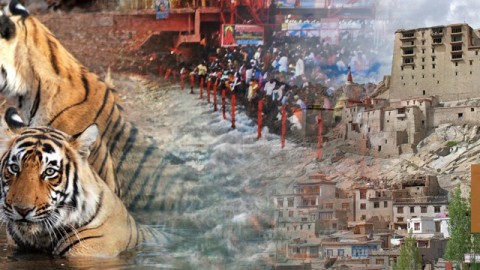Formally known as Indraprastha, Delhi came to be known as “New Delhi” in 1927, and the new capital was inaugurated on 13 February 1931.
Delhi borders the Indian states of Haryana on the north, west, and south and Uttar Pradesh (UP) to the east. The Yamuna River was the historical boundary between Punjab and UP, providing fertile alluvial soil suitable for agriculture. The Hindon River separates Ghaziabad from the eastern part of Delhi.
Spread over 1,483 sq km area, Delhi bridges two different worlds. Old Delhi, once the capital of Islamic India, is a labyrinth of narrow lanes lined with crumbling havelis and huge mosques, while New Delhi, created by the British Raj is composed of spacious, tree-lined avenues and imposing government buildings.
Delhi is a melting pot of all cultures and traditions. Thronged by multinationals in Gurgaon and Noida, Delhi saw a huge number of immigrants settling here for career opportunities. While Delhi has created jobs for thousands, it has also given thousand reasons to smile. The city is well known for lip smacking road side snacks, ranging from golgappas and chaat paapri to choley bhature and rajma chawal. Roadside markets like Lajpat Nagar and Sarojini Nagar are favorite shopping destinations for all. Mall culture mushroomed rapidly in entire city in early 2000 which became a part of entertainment for all.
Monuments built during the British raj and Mughal time remain to be tourist destinations, hence giving Delhi a heritage of the golden era. Be it the Red Fort, where the national flag is hoisted on republic day, or Akshardhaam, the largest Hindu temple of the world, Delhi is full of architectural magnificence s to surprise you.
Delhi or Dilli is called Dilwalon ki Dilli for the large heartedness and live life king size attitude. The city has much more to offer you than what meets the eyes.
Details of Delhi Tourism Department
| Website | http://www.delhitourism.gov.in |
| Contact No. | +91-11-24647005, 24698431, 24618026 |
| Email Id | tourism@delhitourism.gov.in |









